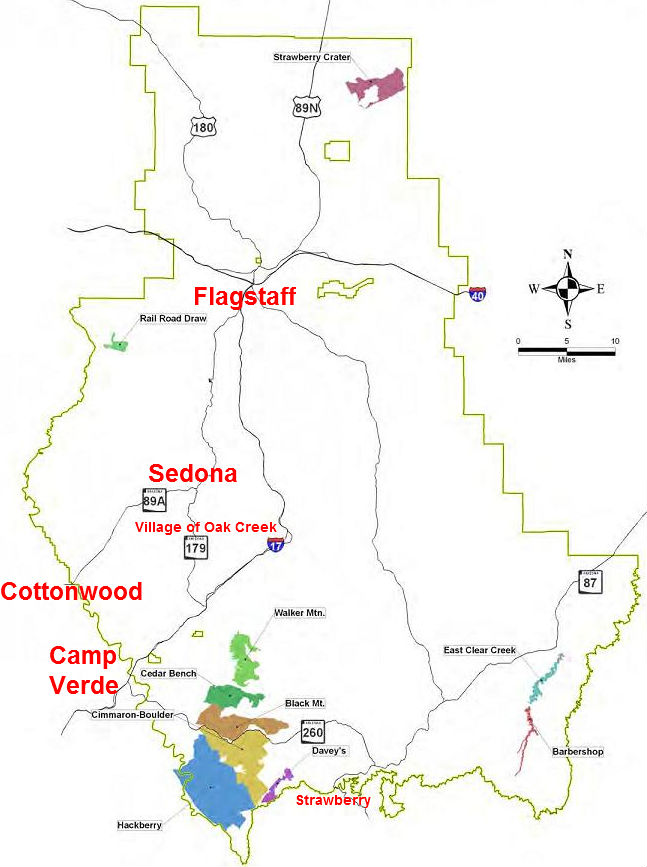More than 30,000 acres of Coconino National Forest situated in the lower Verde Valley could be designated wilderness, where mountain bikes and all-terrain vehicles are banned, but only if Forest Supervisor Earl Stewart recommends it and Congress approves.
The process from recommendation to approval could take one year or 20, said Sara Dechter, U.S. Forest Service social science analyst working on revisions to the Coconino National Forest Management Plan.
Before recommendations are signed, however, the public will have its say about potential wilderness, Dechter said.
USFS will meet the public to hear comments at 5:30 p.m. Tuesday, July 27, at Red Rock Ranger District headquarters, 8375 SR 179, near the Village of Oak Creek.
Wilderness area designation is a small part of the Coconino National Forest Management Plan overhaul now being conducted by USFS. The last comprehensive revisions to the plan took place in 1987, Dechter said.
On July 10, the USFS issued a report about the 10 most likely candidates for wilderness designation within Coconino National Forest. Included on the list are six lower Verde Valley areas, many named for the local landmarks they encompass: Cedar Bench, Black Mountain, Cimarron-Boulder, Davey’s, Walker Mountain and Hackberry.
Most of the potential wilderness areas are grouped together south of Beaver Creek and east of Camp Verde between Forest Roads 618 and 708, Forest Planner Yewah Lau said.
 Of the six, three were considered highly needed: Black Mountain, Walker Mountain and Hackberry, USFS records state. A high-need designation means “the area contributes considerably to recreational and ecological needs.”
Of the six, three were considered highly needed: Black Mountain, Walker Mountain and Hackberry, USFS records state. A high-need designation means “the area contributes considerably to recreational and ecological needs.”
Need is determined by several factors, including the location, size and type of other wilderness areas in the vicinity and the distance to get there.
Other factors include how much pressure there is from visitors who want to experience wilderness and whether the area is home to species of animals needing refuge only wilderness area designation can provide.
There are already 1.1 million acres of designated wilderness within 100 miles of Cottonwood and the Verde Valley, according to the USFS report.
In the Walker Mountain potential wilderness area, the Gila chub, black hawk, lowland leopard frog and narrow-headed garter snake would benefit from the designation. In the Black Mountain potential wilderness area, the golden eagle would, the report states.
 Designation would ease pressure on several species in the Hackberry potential wilderness area, including the Mexican freetail bat, red bat, Townsend’s bat, spotted bat, greater western mastiff bat, lowland leopard frog, garter snake and yellow-billed cuckoo, according to the report.
Designation would ease pressure on several species in the Hackberry potential wilderness area, including the Mexican freetail bat, red bat, Townsend’s bat, spotted bat, greater western mastiff bat, lowland leopard frog, garter snake and yellow-billed cuckoo, according to the report.
“I want people to know this is very early in the process,” Lau said. “There’s really no proposal on the table yet. We really want to listen to the public before recommendations are made.”
“We want to hear about the trade-offs,” Dechter said. “In an area recommended as wilderness, what would be lost and what would be gained?”
Reports about the potential wilderness areas can be viewed online at www.fs.fed.us.



